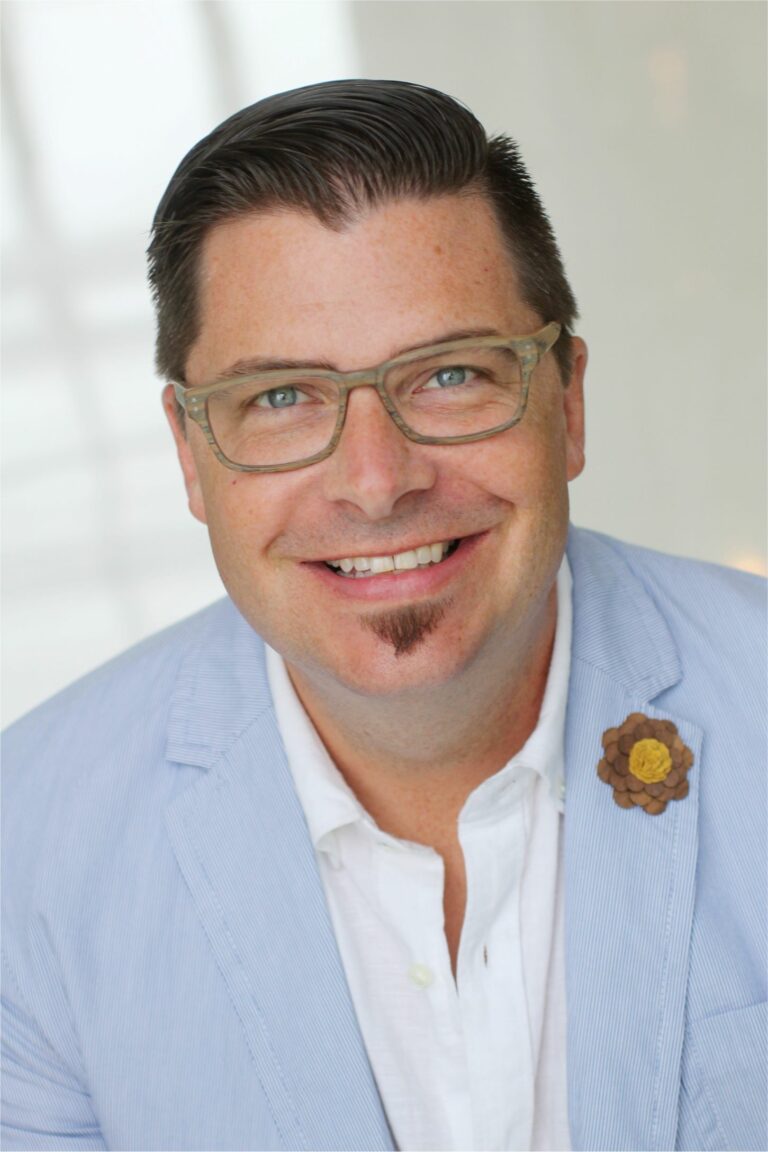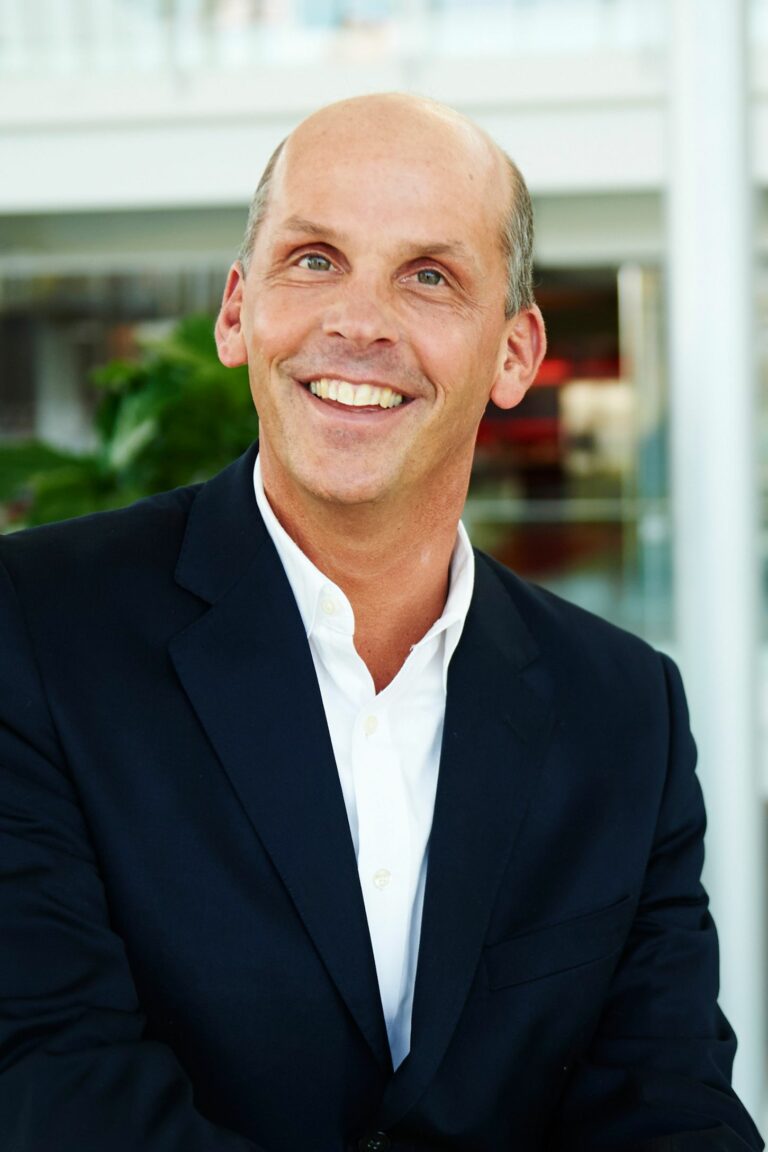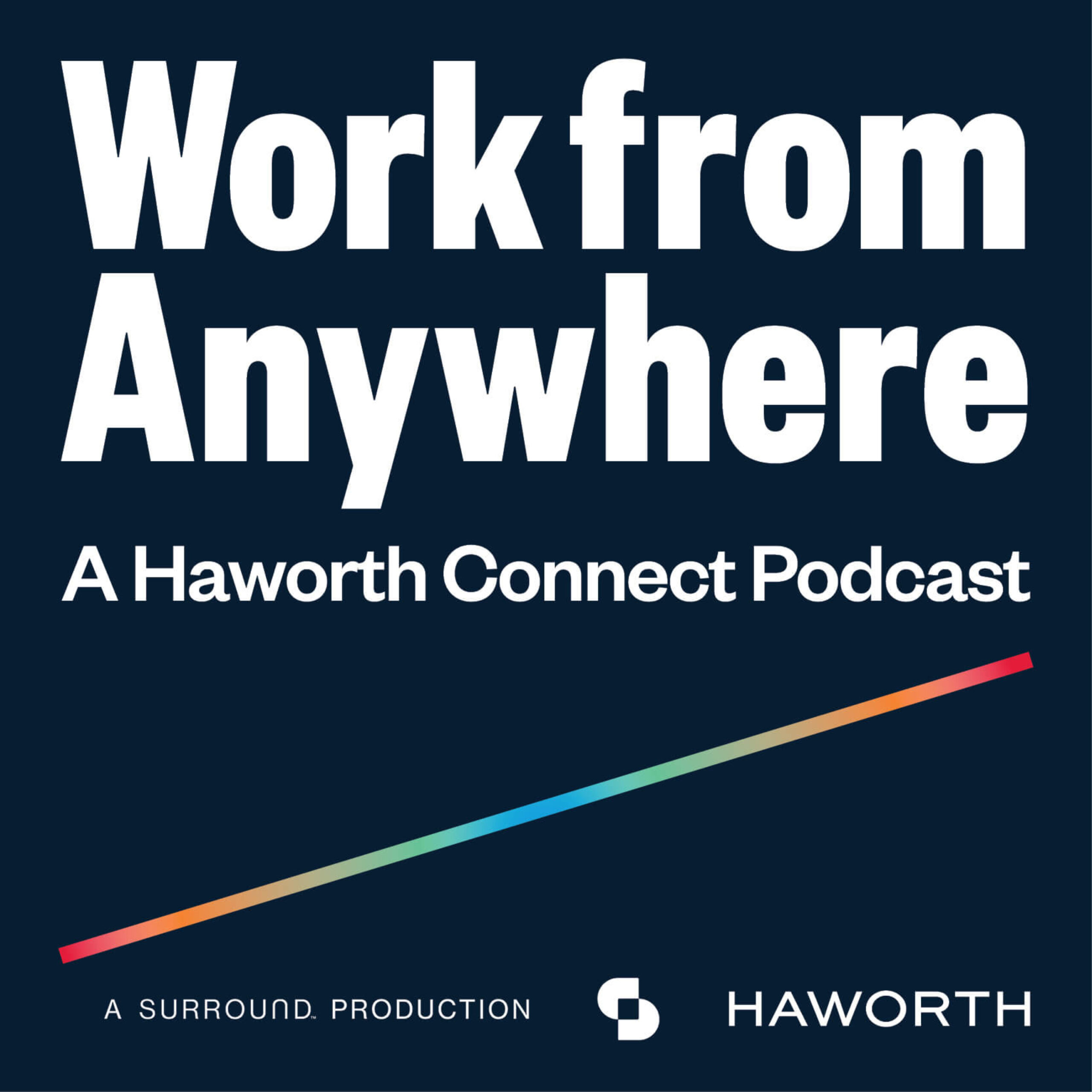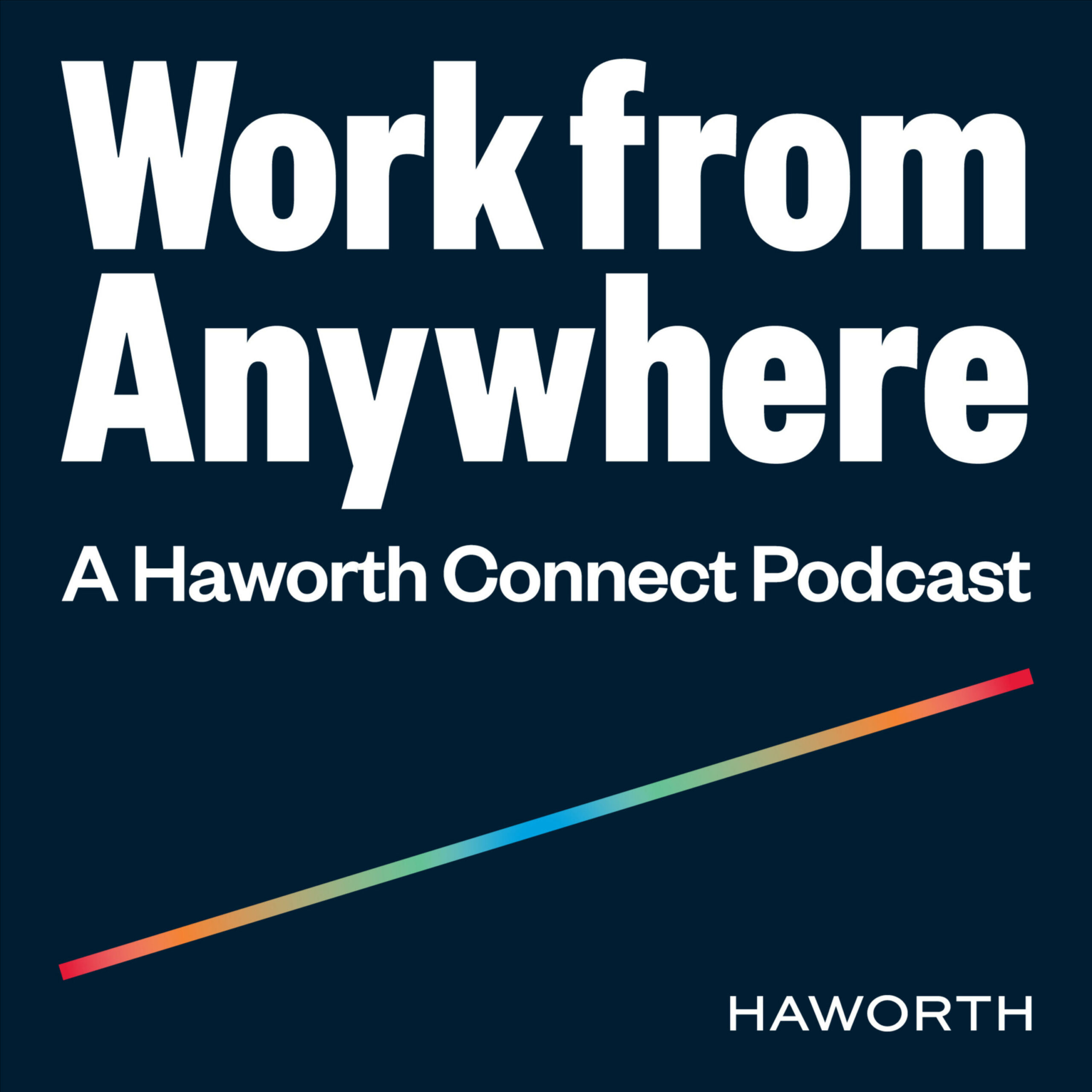There’s a positive tension between culture, competencies, and communities in the workplace that leads to positive outcomes. Haworth’s Kurt Vander Schuur chats with thought leader, author, and Professor Jeff DeGraff about what drives innovation among four culture modes. With real-world examples, Jeff explores the “blurred line” between work and private life, office and home, and the implications for keeping culture alive, instilling values and mentoring based on generational expectations. The impetus? Making work meaningful for the most valuable asset—your people.
Guest: Jeff DeGraff, University of Michigan Professor, advisor to Fortune 500 companies, author and thought leader on building innovation, culture, and creativity.
Host: Kurt Vander Schuur, Haworth Global Brand Director
Kurt: Hello, and welcome to our next in the series of our Work from Anywhere Podcast from Haworth. My name is Kurt Vander Schuur, your host, and today I’m excited to have on with me Jeff DeGraff. Jeff DeGraff is a Dean of Innovation at the University of Michigan. He’s an author and a thought leader. And we are looking forward to having some provocative conversations today about workplace culture and the impact it has today in our work from anywhere world.
Welcome, Jeff.
Jeff: Thanks for having me on, Kurt.
Kurt: You know, Jeff, I thought it would be good to give people just a quick high-level reminder of the competing values model and talk about the four cultures.
Jeff: The competing values framework is often called the Michigan model. It’s been around for about 40 years. It’s one of the most important models you’ll be taught if you go to business school. It started with [Robert] Quinn and [Kim] Cameron and me and Anjan Thacker. The model is not a typing indicator. It looks at how leadership produces culture, competencies, and communities and how those cultures, competencies, and communities produce value propositions or results or outcomes.
So, these are not necessarily all beautifully aligned. They push against each other with positive tension. Let’s give you an example. Look at the automobile industry and where it’s going in 2030. In the forward position, what we’re going to call the create position, we have autonomous vehicles. These autonomous vehicles come from lots of experiments and some of the stuff works, but most of it doesn’t, sort of the top of a funnel.
Then you sort of move along and you got fintech because we’re going to finance cars as they get more expensive in different ways, sort of mashing up how your financing works, right? And that really comes from, these kinds of very short-term banking sort of things that go on, they’re very competitive.
And then in the aft position, we have to have smart cities in order to drive these cars, so we don’t hurt anybody. And that comes from a lot of process. So, at the beginning, we’ve got a lot of vision, then we’ve got a lot of goals, and then we’ve got a lot of process.
And this kind of creates a process. But if we have a blind spot, which is the key to this whole thing, the whole thing could fall apart. So, for example, when we look at young people buying cars, we think that less than half of all the young people today are under 30; when we look at 2030, we think that less than half of them will buy a new car. Which means, in fact, nothing is going to work, that industry is going to have real problems.
There’s an old saying in my world, which is the worst of all growth strategies is to have an increasing share of a decreasing market. So, you have to look at all four. These are not style issues. They’re issues about types of value. You know, if you have quality, you reduce variation. If you have growth, you increase variation, right? These are not issues of how I want to do things. There are issues about what we actually do as a corporation, where we put our money, how we lead positive tensions, create hybrids, better ways, third ways of doing things. It actually drives innovation.
Kurt: Great. That’s a nice overview, Jeff. For our audience, we think about the 4 different kinds of modes: create, control, compete, and collaborate. Jeff, you can just give an example in each one and that just would help our audience relate to these modes.
Jeff: Yeah, I want you to think about how this is something that’s very present. Think about how drugs are discovered these days. They’re not discovered in sort of a big pharmaceutical anymore. There are these vertical COINs, collaborative open innovation networks, and they all do little bits of science, and we invest as venture capitalists in a little bit in all of them, and we see which one’s work.
So, we accelerate the failure cycle in the forward position, the create position, because the create position has a high degree of ambiguity. They’re risk tolerant, they’re making stuff up as they go along. That’s why small companies are typically in the create quadrant, and the people who run them, we typically call artists. So, when I was a young man, I got to be an advisor to Steve Jobs. Think about Steve Jobs in that category, right? And hopefully, we get some more diverse examples as we move forward.
Then you think about the next step or the opposite step. The very opposite of that would be we’re going call the control position, and that’s really going to be run by engineers. The create position is run by visionaries or led by visionaries. And the control position is led typically by engineers because they’re held together by process because there are so many moving parts. You know, you’re making an airplane.
Yeah, you know, you’ve got a supply chain issue during a pandemic—a lot of moving parts. You’ve got to have a lot of process for that. So, between the create and control, there’s tension and how the leaders lead are very different. The create leader typically starts things, but to get to scale, we need the control leader.
And that’s the issue incidentally of how much innovation. If we look at how fast the innovation has to happen, then we look at the compete position, the sprinters, you know, I’m a business school professor, what we look at in that position is we look at things like what’s going on with fintech.
We look at things where it’s going on with microfinancing very quickly, getting money on what looks like a good investment, right? And the kind of thing we’re going to see in anything that moves really fast, like brands or financial markets, sports teams. Think about Wall Street and then the opposite of that.
And incidentally, baby boomers are typically in this position. I’m one of those, you know, we’re driven by goals. We want to achieve things. We went to the moon, we built the net, and we made miracle drugs. We screwed up the environment and so much of social issues. But that’s not the center of what that position is.
And the opposite of that is our kids. They’re in the collaborate position, and we’re going to call them sages. So those boomers are kind of athletes, and those young people are sages. And what they’re very interested in is what’s sustainable. So, we’re getting industries that we thought were gone.
We’re getting local grocery stores again and slow food, we’re making decisions now, and our buying decisions are not necessarily based on cost or speed. They’re based on what we think is morally or ethically right. And these people, of course, and leaders are held together by values. So, you’re going to see in workplaces, very different approaches to the type of value and the type of workplace you’re trying to create.
Kurt: I think that’s fascinating. And what’s interesting to me, Jeff, is today as we think about hybrid work and post pandemic, and people coming back to locations, either satellites or corporate offices or just any kind of location. Give us your thoughts about, how can people think about culture and also about innovation, which is something that kind of struggled when many people were working at home.
Jeff: Yeah. There’s a number of issues. I’ve been on the talk show circuit a lot lately around this. First of all, how you innovate is what you innovate. So, what approach you take will determine what outcome you get. Now, what’s been interesting to me is that we seem to think that there’s one way or the other.
And one of the things I would turn to is there’s a very popular movie out right now about Robert Oppenheimer and about the Manhattan Project. Well, what I like about that movie, what I think it represents is if you’re doing big science, big research, big innovation, heavy lifts, radical new things, you need to be in the same room with other people.
The notion is we call these creativity clusters and there’s a lot of research that says the heavy lifting parts require a lot of bandwidth and we know that we get a lot of information serendipitously through nonverbal communication, right? This is why you want to co-locate people.
This is why you want people to be in the aquarium together. But that’s only part of the story. Then if you’re going to do work that’s less intense, that’s more transactional or work that, you know, you divide and conquer after you have that middle piece. Then, of course, you can go home, or you can go into a whole other series of steps between here and home.
And you can see this in coffee shops. One of the things I always laugh about is bars and coffee shops: go around any city that’s got a lot of tech-savvy, a lot of intellectual property, and you’ll see all the interesting meetings are not happening in the big buildings. They’re happening over a cup of joe, or they’re happening over beer. It’s not just about going to the main office or HQ or going home. There’s a lot of other steps. People meet informally; there’s informal networks. You could see this a lot with hobbies. Whether you’re fantasy league football program, churches, or alt bands, right? So, what’s happening is the line between work and your private life has completely been blurred, right?
I think, I think hybrid is maybe not the right word. I think the word is kind of, think about that blur somewhere between, you should be in an office, and you should be at home. But here’s the key to all this with your listeners: they’re not the same. They’re different things you do in each area.
It’s very hard to do big science, highly collaborative science at home alone, or a huge marketing campaign, or a very complex kind of development piece that you’re doing around a new facility. That’s something you want to be co-located for. You want to be in a space.
On the other end, the kind of more personal, deep-thinking work, you can be alone. And what’s really neat these days is a lot of times these offices are starting to look like the innovation ecosystems that I built. There’s big spaces and middle spaces and small spaces where people can drop in and drop back out.
And in fact, today, absolutely today, on the front page of, the Washington Post, there’s a big story called, Back in the Office, but not from Nine to Five. And basically, what the article is saying is there isn’t an either-or thing here. So, the type of culture you’re trying to create will vary from where you’re actually at and who you’re working with.
Kurt: I think that’s great. And thanks for sharing the article. That’s exactly right spot on the money. Another topic that we think of when we talk about culture is, when people are dispersed wherever they are, it could be at client location, could be anywhere, but we know that more people are dispersed, and they may not be working common or shared hours.
How do leaders, how do business leaders and companies keep their own culture of their company and instill values, and mentor young people. And what are your thoughts about that?
Jeff: Yeah, well, for the most part right now, people are not doing a very good job of it. There’s a lot of writing and a lot of research on this and it’s not working very well. Whether it’s education or whether it’s at the workplace, there’s a lot of issues of how are we maintaining the culture.
And I can tell you what I think the cause of this is. We historically have had what I call the Matryoshka mindset about organizations. The [organization] looks like the big matryoshka and then the next matryoshka looks like what your team is supposed to look like. And then you’re supposed to look like the smallest matryoshka.
It’s the old man in the gray flannel suit problem. Even though it’s not a man anymore, it’s not a gray flannel suit. It’s still the notion that we’re all supposed to look like each other. And I think what COVID did is it basically said, no, we’re going to deal with the whole person now. That the whole idea that we’re all going to fit together in a nice, aligned way is not true anymore.
So, we’re starting to see real diversity, not just in terms of traditional definitions of it, but in terms of cognitive diversity, we’re starting to see that in the workplace. I think there’s things that people do a really good job of this. One of it, of course, is one-to-one or small group interactions.
It’s the old mentoring thing that I came up with. And universities are great at this, incidentally. It’s one of the things you can learn from universities: senior people mentor or help younger people get published, get money and, do well, and get tenure. We’re starting to see this in businesses where we’re having to reach out to our newer people.
And this is important, Kurt, because there’s some very big differences in expectations based on the generations that we’re dealing with. It’s also different around the globe. You should know it’s not just the world isn’t just the way America is. It’s also quite different in parts of Europe because there is no real Europe, there’s just different countries and Asia, etc.
I think the big thing that leaders need to do around culture is to help people make meaning. That’s it. Everybody talks about happiness these days. I don’t think that’s it at all. I think, in fact, most of the research says it’s really not about happiness.
It’s about meaningfulness. Are you making meaning? So how does that person’s work relate to the group’s work? How is it impactful? How does this, how does what they’re doing matter? I think what’s important about that that is gets done through stories, through metaphors, through patterns, through connecting things.
Other things I think that really matter a lot whether we allow people to create our culture to exhibit what we call self-authorizing behavior, meaning they’re not waiting for high command to tell them to do something. They get to initiate things themselves. Hopefully, we’re in alignment with the vision and what the organization’s doing.
Right. But the notion is encouraging people to do that. Now, as I’m sure you know, as we go forward, transactional work for all practical purposes is over, artificial intelligence, which is the field I come from, and augmented reality. It’s spatial computing or whatever we’re calling it these days.
That’s going to subsume transactional work in a very short period of time. So, everyone now is going to have to bring their creativity. They’re going to have to be highly adaptable. And that means that leaders are going to have to be highly adaptable. I’m less worried about the people working in the workplace.
And I’m far more worried about us older people who kind of grew up in one system and our leadership style, because I think we’re going to have to make some big, and I’ll put myself at the top of that list, we’re going to have to make some big adjustments because this workplace is an inflection point after COVID.
It’s not going to look the way it did before COVID. If you think about the workplace before COVID from the Second World War to the tech revolution, there’s a nice straight line. After COVID, there isn’t, right? We’re competing in federations, our groups are mashups, things come together, they go apart, who your colleagues are, is much more fluid.
It’s a very different world.
Kurt: I love your thoughts and analogies. Jeff, for the final thought today is, if you’re leading a company today and we’re thinking about workplace culture and leading for the future and, and most companies are thinking about growth and innovation in this super volatile world. And you captured the idea well about the straight line is gone.
We kind of go up and down and you hopefully that you can aggregate it for a positive, but what are some things that you would challenge leaders to think about and maybe some cautions as well as they’re talking about this?
Jeff: Great question, Kurt. The days of easy growth are gone. Over 50% of all growth in the last 25 years came from East Asia. It’s over. You’re watching it. You’re seeing it right now. The paint’s drying, right? The easy days are gone. The best asset you have to make things better and new, which is how value is created, walks in and out of the door every day.
And all you have to do is look at the talent wars that are going on right now. If I’m a leader, just like if I was a leader of a sports team or a great symphony, I’m trying my best to do two things. I’m trying to recruit the very best players I can. And you do that by workplace. Do they like working here? What do they want out of a workplace? You know, is it, are they younger people who want values and harmony that kind of collaborate position? Are they my age where they just want to get in and get things done and accomplish goals? What is the end game of that workforce that you’re bringing in?
It’s not going to be the same. How do you interact with those different groups of people? Because that’s how the positive tension is created. If you don’t have the positive tension, you’re not going to get you’re not going to get the kind of innovation that you want. And remember, it’s important that they feel that they they’re making meaning.
I just want to come back to this over and over and over again. And finally, the biggest thing that I see as, which I think has just been an enormous shock to companies around the world is that people walk out the door. It’s bad. These organizations are kind of bleeding out. I don’t know how else to call it.
You know, these people are leaving who are their franchise players, their very best players. And the whole notion of here’s the package and here’s the way we do it, those days are over. And what people say all the time is, well, there’s going to be a recession and that will change everything. It will change everything from the people who don’t have those unique skills.
But those people that do, it will not change anything. It will, if anything, it will become more pronounced. Take care of your people. It is the most important thing. Know what real talent you have there. Know what their aspirations are. Know what they want out of life. Understand what the value proposition is. Understand what their triggers are. Why they might leave. And in the age of micro segmenting and social media, most importantly, find common ground. You need these groups to be coming together. The problem that we’ve got right now in the workplace is the same problem we have in media, which is the 10% at either end is making all the noise.
It’s not just political could be anything. They’re making all the noise because the way social media works that comes to the top of the list. Remember, 80% of your workplace isn’t there. 80% is in the place where they can interact. They know how to interact. We’ve got to find those shared visions, those shared values, those common themes, we have to take that tension in a positive way to produce better and new things.
And this is essential. If you can’t do that in the next frame as an organization, you won’t be around very long.
Kurt: Jeff, as always, I love talking to you. You’re always an inspiration. I’m sure our audience loved your thoughts and some tips today for leading their companies. And we look forward to continuing the conversation in a future date.
We hope you enjoyed our insightful conversation today. If you’re looking to learn more,
please subscribe and like this podcast. We will be continuing this series on organizational culture, talking to people within Haworth and outside Haworth to explore and learn more. Just continue to follow us. Signing off. Have a great day.







